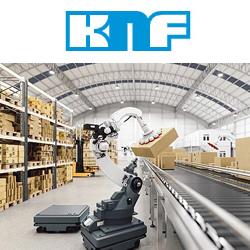Mercedes Boots Robots From the Production Line:
Atlas, The Next Generation
Roving robot 'ground drones' take to streets for deliveries
Republican-Leaning Cities Are At Greater Risk Of Job Automation
Japanese Firm To Open World's First Robot-run Farm
DARPA - FLA Program Takes Flight
Humanoid robots in tomorrow's aircraft manufacturing
Earthbound Robots Today Need to Take Flight
"It's quite large:" Exact Automation showcases world's largest robot
Mobile Robotic Fabrication System for Filament Structures
SoftBank's Pepper Robots to Staff Tokyo Cell Phone Store
HACKLET 93 - ROBOTICS TOOLKIT AND ESP8266 PACKET INJECTION
Greenbot: Driverless Tractor
Is Velo3D Plotting a 3-D Printed Robot Revolution?
Experts At Davos Say Weaponized Artificial Intelligence Robots Are Dangerous
Records 1171 to 1185 of 1677
First | Previous | Next | Last
Featured Product

KNF - Automation Technology Requires Reliable and Durable Pumps
Robotics and Automation - Featured Company

